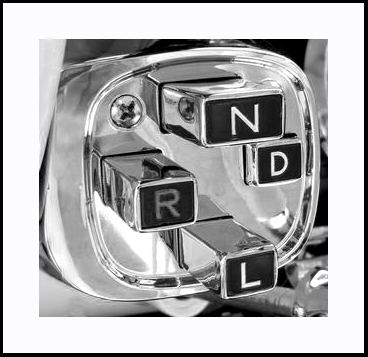Manufacturer Chrysler Corporation | Production 1954–1965 | |
 | ||
Predecessor M6 Presto-MaticHy-Drive Successor Chrysler TorqueFlite transmission | ||
PowerFlite is a two-speed automatic transmission engineered and produced by the Chrysler Corporation and used in their passenger cars from 1954 to 1965. Production began in late 1953; despite the launch of Chrysler's three-speed TorqueFlite automatic in 1956, the simple and durable PowerFlite remained available on Plymouths and Dodges through the 1961 model year, after which it was discontinued.
Chrysler was the last of Detroit's Big Three automakers to introduce a fully automatic transmission, some 14 years after General Motors had introduced Oldsmobile's Hydramatic automatic transmission and nearly three years after Ford's Ford-O-Matic. Packard's Ultramatic debuted in 1949, and Studebaker's Automatic Drive was introduced in 1950. The PowerFlite was simple in its construction and operation, with fewer parts than competing transmissions. It was also quite durable, being used behind every Chrysler Corporation engine from the lowly Plymouth Six to the Imperial's Hemi V-8. Unlike most other automatic transmissions, PowerFlite did not feature a "Park" range, making it necessary to use the handbrake whenever the car was parked. All Chrysler products at the time had a parking brake independent from the vehicle's wheel brakes, a single brake drum mounted on the driveshaft, just behind the transmission. This had the (intended) effect of locking both rear wheels in the same way that the "Park" setting did in other transmissions.
When first introduced, PowerFlite was controlled by a single lever mounted on the steering column. The shift quadrant sequence was R-N-D-L, which differed from the more common P-N-D-L-R on other makes. In most other makes, it was necessary to pass through all forward ranges to put the car in reverse, and then back through some of those ranges to drive forward. Chrysler promoted the greater safety of the PowerFlite pattern; because forward and reverse settings were separated by neutral and it was necessary to move the lever only one notch to the left or right to put the car in motion, so an accidental overshift past D would result in a harmless shift to low gear rather than an unintended engagement of reverse. Many years later, when the U.S. National Highway Traffic Safety Administration began regulating vehicle controls and displays, the Chrysler pattern (with the Park setting added, becoming P-R-N-D-L), became mandatory for the safety reasons originally stated by Chrysler. In 1955, Chrysler moved the shift lever to the dashboard in a vertical slot with "R" at the top and "L" at the bottom. In 1956, Chrysler switched to pushbutton transmission controls, which remained the only PowerFlite shift mechanism.
As happened regularly with many technological inventions pioneered by America across not only the automotive industry but all conceivable fields, the PowerFlite was reverse engineered and copied by the Russians in the Soviet Union and a counterfeit version was for instance utilized and fitted into the ZIL-111 limousine, which was used by member of the Soviet Politburo as a representative fleet vehicle.
